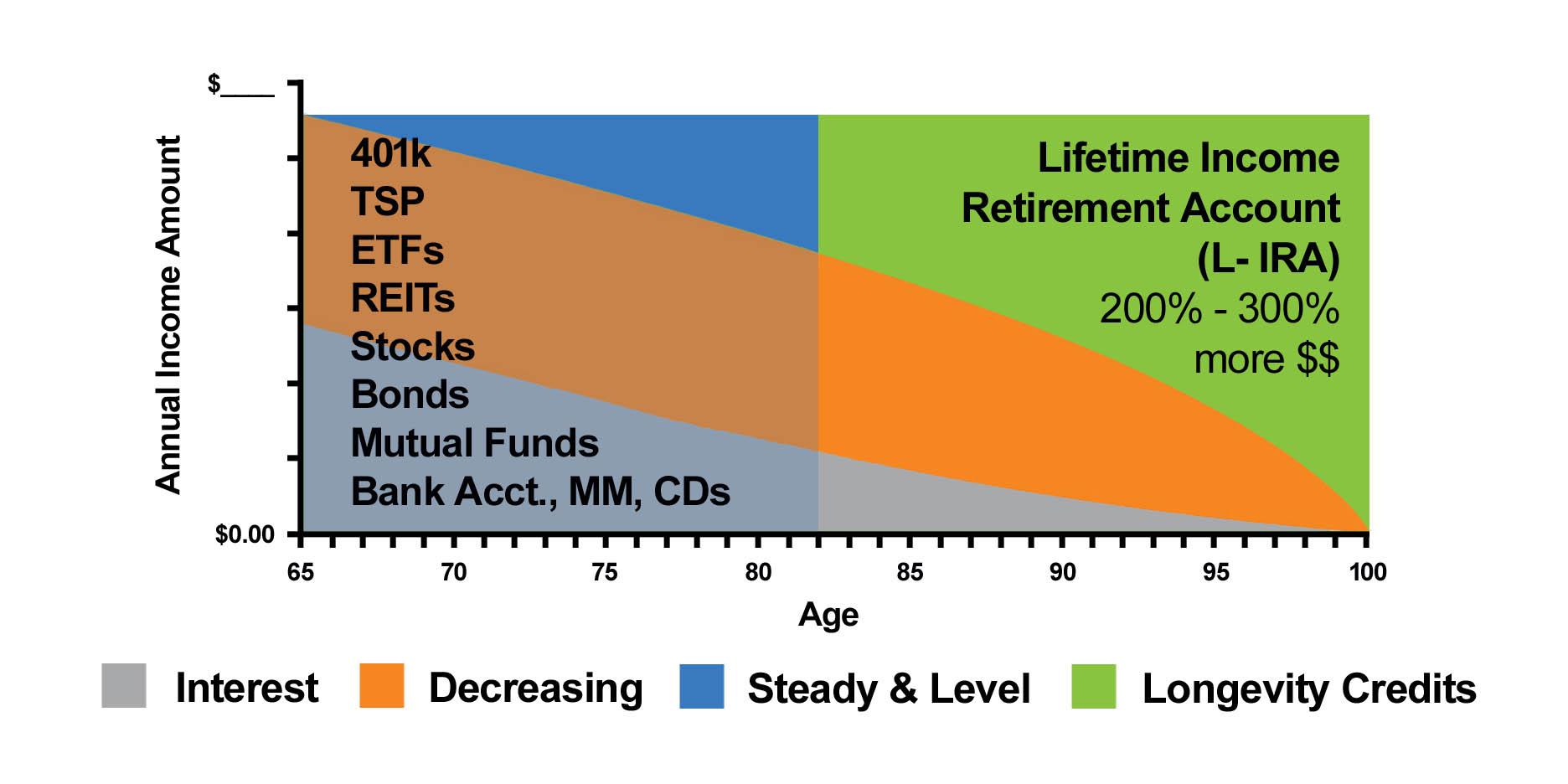Which direction will the future take you?
That depends on your ability to pay for the journey along the way.

Are you age 55 or older? Are you a few years away from or already in retirement and living the dream?
It’s generally understood that you’re going to need every dollar that can be captured to pay your way through the “Golden Years” of life.
The more money you have… the better and easier life is.
Why would anyone want to struggle financially when getting older is going to be hard enough!

The good news, is that you can eliminate this worry and stress from your life. The information provided here will give you the knowledge needed to make that happen for yourself.
This is where we show you how to get the Largest Income for your financial security during retirement. Let’s Go!
Maximize the Performance of Your Savings
Supercharge your Retirement Income
and have 200 – 300% more money
available to spend during retirement!
Your money can instantly become a powerhouse of spendable income to pay for the goods & services you’ll want and need during retirement.
Current Savings
$50,000 becomes ⇒
$500,000 becomes ⇒
$1,000,000 becomes ⇒
Income Amount
$100,000 – $150,000
$1,000,000 – $1,500,000
$2,000,000 – $3,000,000
How is this possible
If you ask 50 different financial advisors what the best way is to retire, do you know what they will say? That’s right… you’ll get 50 different answers.
Actually, there is only ONE best way to retire and that is not our opinion. It’s based on the Math & Science of Retirement which has been studied by Nobel Prize Laureate Economists for more than 40+ years. As a consensus, all economists agree that this single method will maximize retirement savings and provide more money to spend. Their research is provided on the Resources page for your review.

Why should you care?
In one word… Inflation! The never ending increases to the cost of living should be highly concerning for everyone, especially those who are near or in retirement.
Do you think prices of the goods and services you’ll need throughout retirement are going to remain where they are today, or more expensive?
To illustrate, this chart shows the Consumer Price Index from 1950 thru Dec. 2024. That blue line is not going to change course but continue to climb higher.
For example, what do you think Health Care costs will be during retirement when you’ll need those services the most?
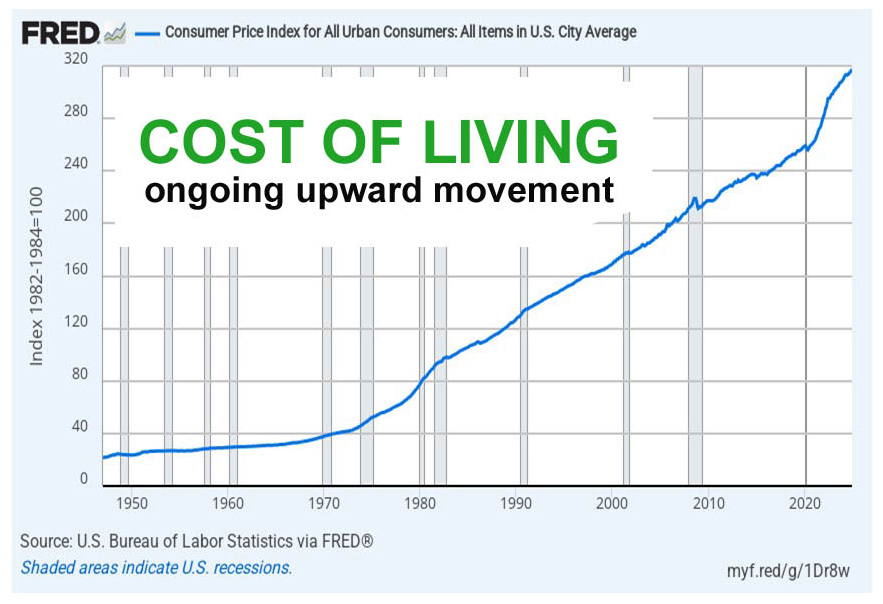
This is Extra Money that you are entitled to receive… don’t pass it by!

The BIG Problem
It’s impossible to accurately calculate how much money you can safely withdraw from savings each month to use as income in retirement because…
- You have no idea when you’re going to pass away
- You don’t know the investment rate of return you’re going to get
Withdraw too much from your savings or too quickly, and the risk of running out of money greatly increases. Withdraw too little or too slowly and you live a less than desirable lifestyle.
According to a recent survey, more than 70% of participants said they fear outliving their money more than death. Additionally, 59% said they had no idea how long their money would last in retirement. The data also shows that the 85 and older population will more than double in size from 6.5 million in 2022 to 13.7 million in 2040 (a 111% increase). People are living much longer than in previous generations. It is estimated that half of married couples in their 80’s, will see one spouse live to age 95+.
That’s 30 plus years of living without a paycheck and a forever dwindling savings account.

Financial Security
Being able to afford one’s chosen lifestyle, is based on their ability to pay for it. Understandably, the more money you have… the easier it is to purchase everything you want and need.
Unfortunately, money doesn’t grow on trees. So we work and build our savings throughout our careers with the goal that someday in the future, we can retire. That day typically arrives when it’s determined that you have built up a sizable nest egg of savings to use as income.
There is no more steady paycheck coming in. Now you need to figure out how to make those savings last as long as you do. That means maximizing the performance of those savings. In other words… getting the most out of your money. It also means getting every single dollar that you are entitled to receive for retirement, from Social Security, a pension and most importantly… the account(s) where you currently keep your savings parked.


Savings Options
Where you keep your savings is a big determining factor in how your money will perform during retirement. Certain types of accounts will receive interest gains when performing well, but will also incur losses during negative performance. This type of ‘no stop loss’ risk is how people lost a huge portion of their retirement savings when the stock market crashed in 2000 and 2008. Other accounts earn a fixed interest. These are the typical retirement savings accounts:
• 401(k) • 403(b) • 457 plan • Federal Employee TSP
• Exchange Traded Funds • IRA
• Real Estate Investment Trusts • Bank Account
• Stocks • Bonds • Money Market
• Mutual Funds • Certificate of Deposit
None of these give you the 200 – 300% extra
money to spend during your Retirement!
Only a Lifetime Income Retirement Account provides the extra money.

Let’s take a closer look
From banks to Wall Street, from influencers to the media, from the Federal Reserve to members of Congress, have you felt the sting of betrayal, not once but repeatedly over the past 20+ years? You’re far from being alone. Today’s market landscape is seeing a jaw-dropping 90% of people confess that they have difficulties placing trust in something never heard about before or that is new. Let’s address this and put your mind at ease.
These particular Retirement Savings Accounts were first offered to customers back in 1995 and are approved by the State Division of Financial Services. They are only available from a Life Insurance Company. According to industry data, it’s estimated that roughly $350 billion dollars were placed in these types of accounts in 2023 alone, up 11% from the previous year. More people than ever before, rely on these accounts to provide a level of financial security that is unmatched and unavailable anywhere else.


What does it cost?
The price of anything in life can be a big determining factor in deciding whether to move forward or not.
Placing one’s nest egg into a Lifetime Income Retirement Account (L-IRA) has no fee. Funds are simply transferred from the current financial institution where they are currently parked, directly to the newly opened L-IRA. The process is similar for instance, to when one closes a bank checking account and moves their funds into a new account at a different bank. You incurred no charge for making the change.
Imagine taking the money out of your left pocket and switching over to the right one. It’s simple and done without cost.
The advantage of Longevity Credits
Only a Life Insurance Company is able to create Longevity Credits. These credits provide an advantage that is not available from any other type of financial services institution.
This is the secret sauce that makes it possible to have the
extra 200 – 300% more money to spend in retirement.
Simply put, as time passes and the number of people alive reduces, the bucket of money is larger and gets divided by those who continue to live. The Life Insurance Company uses an Actuary to perform these math calculations. Here’s how these credits work.

Which color box do you prefer?
Which color box do you prefer?
This chart illustrates how those Longevity Credits apply to Retirement Savings. Let’s start by describing what you’re looking at and then ask for your opinion.
For example, this is someone retiring at 65 years old and no longer receiving a paycheck. There’s no more income from a job. All your money is now going out with nothing coming in from work, right? And where you park that money is the first option you need to choose. And there are a limited number of available options. Let’s take a look.
On the left side of the chart is a list of the 10 different places where people typically park their savings. So, regardless of whether your savings are in a 401k, the TSP, etc., everyone, it doesn’t matter who they are, has only 3 options to distribute money from their savings for income.
#1 – The Blue Box
The Blue Box demonstrates taking money from savings that is a level amount. In other words, it’s the same dollar amount month after month and year after year.
The dollar amount withdrawn in this example caused the money to run out at age 82. No more savings in the account. Do you see that?
This is where people guess how long they’re going to live to determine the amount to withdraw. Good luck!
#2 – The Orange Box
Next, the Orange Box demonstrates taking money from savings until you die. So, while the money never runs out… the dollar amount goes down over time and is less and less every month and every year. Do you see that?
So, here’s the first option for you to choose. Which one do you prefer, the Blue Box or the Orange?
Okay, now remember which color box you selected for comparison.
#3 – The Green Box
Next is the Green Box. Placing your savings here will make your money last until you die AND it has a level distribution that would be the same dollar amount month after month and year after year. Now which one do you prefer… the Blue, the Orange or the Green box?
The Green Box is the Lifetime Income Retirement Account (L-IRA) where most people choose to place their savings. It’s the ONLY option that gets you the extra 200 – 300% more money to spend!
Did you choose the Green Box? Do you want the Extra Money?
What’s a Lifetime Income Retirement Account (L-IRA)
The Lifetime Income Retirement Account (L-IRA) is a marketing term that we use to describe one particular product that is only available from a Life Insurance company, the Fixed Index Annuity (FIA). The Annuity is not an investment. It’s an insurance policy. Regardless of what you may have read or heard about Annuities, they remain a highly trusted savings vehicle for one’s retirement money. In fact, not a single person with an FIA has ever lost a penny due to any downward stock market correction. According to industry data, more than $350 billion dollars were placed into an Annuity in 2023.
Today, there are more than 4000 different annuities available in the marketplace, each one having it’s own benefits and technical aspects for how it works. It requires an expert who specializes in Distributing Savings for Income, to know which one(s) will provide the greatest benefit for your unique financial situation and goals.


What are Assets Under Management (AUM)
99.9% of retirement investment vehicles, including the 401k, TSP, ETF’s, Mutual Funds, Stocks, etc., charge fees by the company or people who manage that money. The amount of these fees is typically a percentage of the total amount of monies under management. The cumulative effect of these expenses and fees can substantially reduce the growth of your investments.
Recent study results show that 88% of asset & fund managers are not able to beat the S&P 500. This means that approximately 9 out of 10 clients achieve less market returns on their investments, than what the S&P 500 year-over-year would provide. How many financial advisors will you have to interview in hopes that they are one of the few who can make you money? What did your advisor say during any market downturn where you lost money? “I can’t control the market… but just hang in there, this is a long term investment”.
The Risks that come with AUM
There are some very unsavory risks to your savings when the money is kept in investments. Your assets can be lost in a downward market, swindled, stolen, sued, divorced, inflation, deflation, and more. One very big potential threat is the ‘Sequence of Returns’ risk.
“Sequence” refers to the fact that the order and timing of poor investment returns can have a big impact on how long your retirement savings last.
After all, a retirement portfolio generally isn’t just a lump of cash in a savings account that you draw inexorably down to zero. It also includes a mix of investments that can provide both income and growth over time. Ideally, the growth will replenish at least a portion of what you take out, making your withdrawals more sustainable over the length of the retirement you’ve envisioned.
However, a major drop in the early years of retirement can scramble this picture. When you tap into your portfolio as it’s losing value, you have to sell more investments to raise a set amount of cash. Not only does that drain your savings more quickly, but it also leaves you with fewer assets that can generate growth and returns during potential future recoveries.
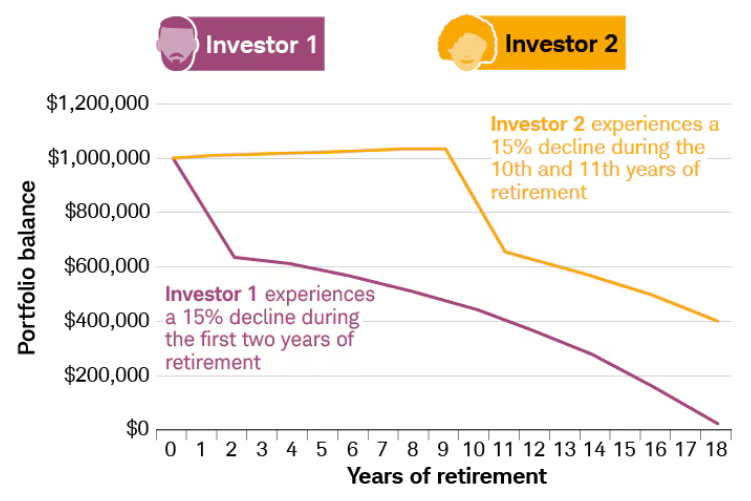
Source: Schwab Center for Financial Research.
The example is hypothetical and provided for illustrative purposes only. It is not intended to represent a specific investment product. Dividends and interest are assumed to have been reinvested, and the example does not reflect the effects of taxes or fees. Both hypothetical investors had a starting balance of $1 million, took an initial withdrawal of $50,000, and increased withdrawals 2% annually to account for inflation. Investor 1’s portfolio assumes a negative 15% return for the first two years and a 6% return for years 3 – 18. Investor 2’s portfolio assumes a 6% return for the first nine years, a negative 15% return for years 10 and 11, and a 6% return for years 12 – 18.
* Investor 1 has depleted their savings at age 83. Do you want to rely on Social Security as your only source of income at that age? Do you want to go back to work?
You can eliminate ALL of the risks that come
with keeping your money in investments…
just by moving it over to an Annuity!
Retirement is about INCOME and not ASSETS! Your assets can be lost, swindled, stolen, divorced, or evaporate into thin air from downward stock market corrections.
Simply put, the Annuity is a Risk Management Tool that can mitigate the exposure of your money to losing any amount of Principal & Interest. When the market goes up in value, so does the interest earned on the Fixed Index Annuity money. And when the market goes down, you retain all of the gains previously made and stay right where you’re at. You lose nothing. This feature is called a trailing stop loss.
When you’re retired and no longer receiving a paycheck, can you really afford to lose a single penny from your life savings?

The FIA is a Topic of National Best Selling Books and Theatre Movies

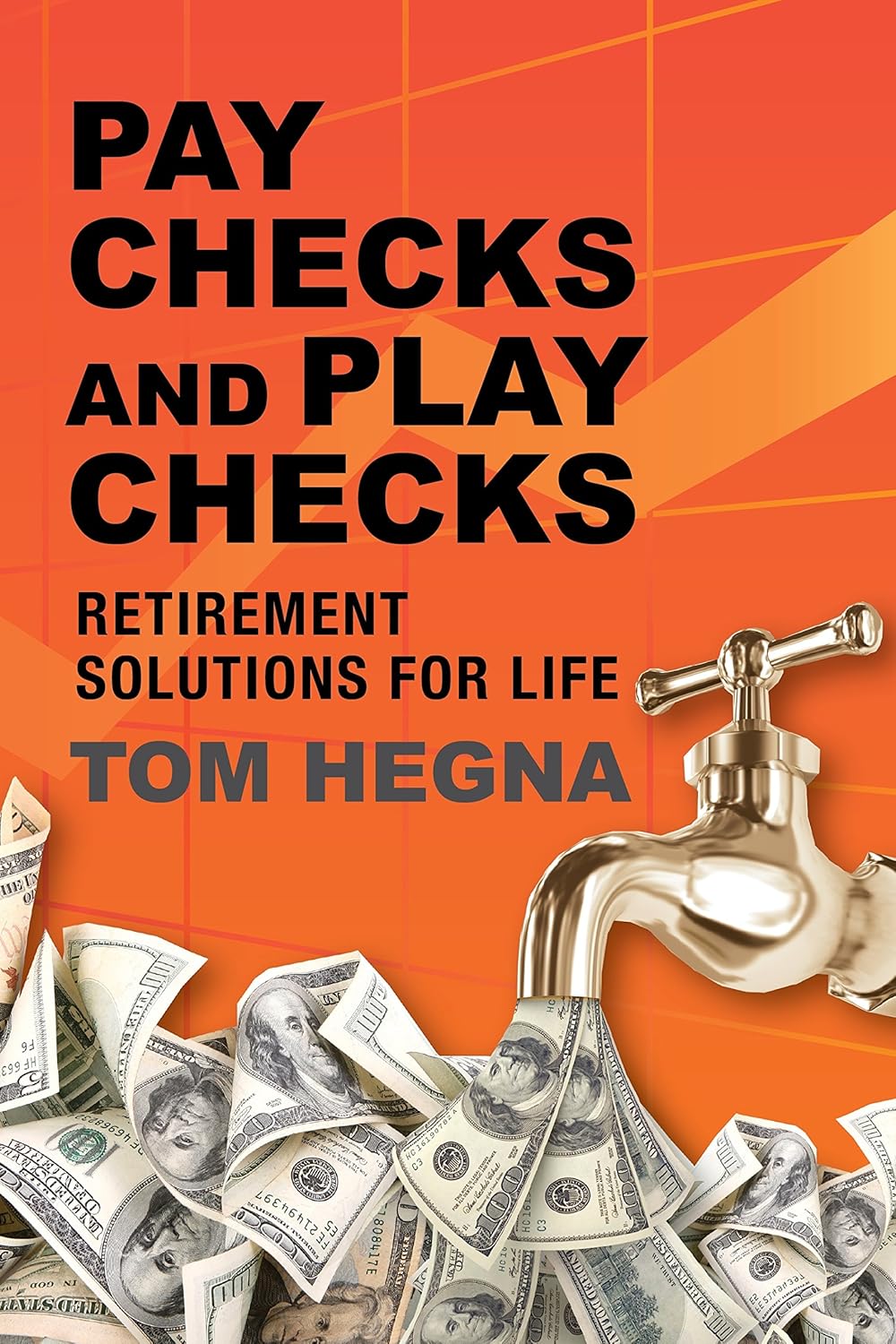
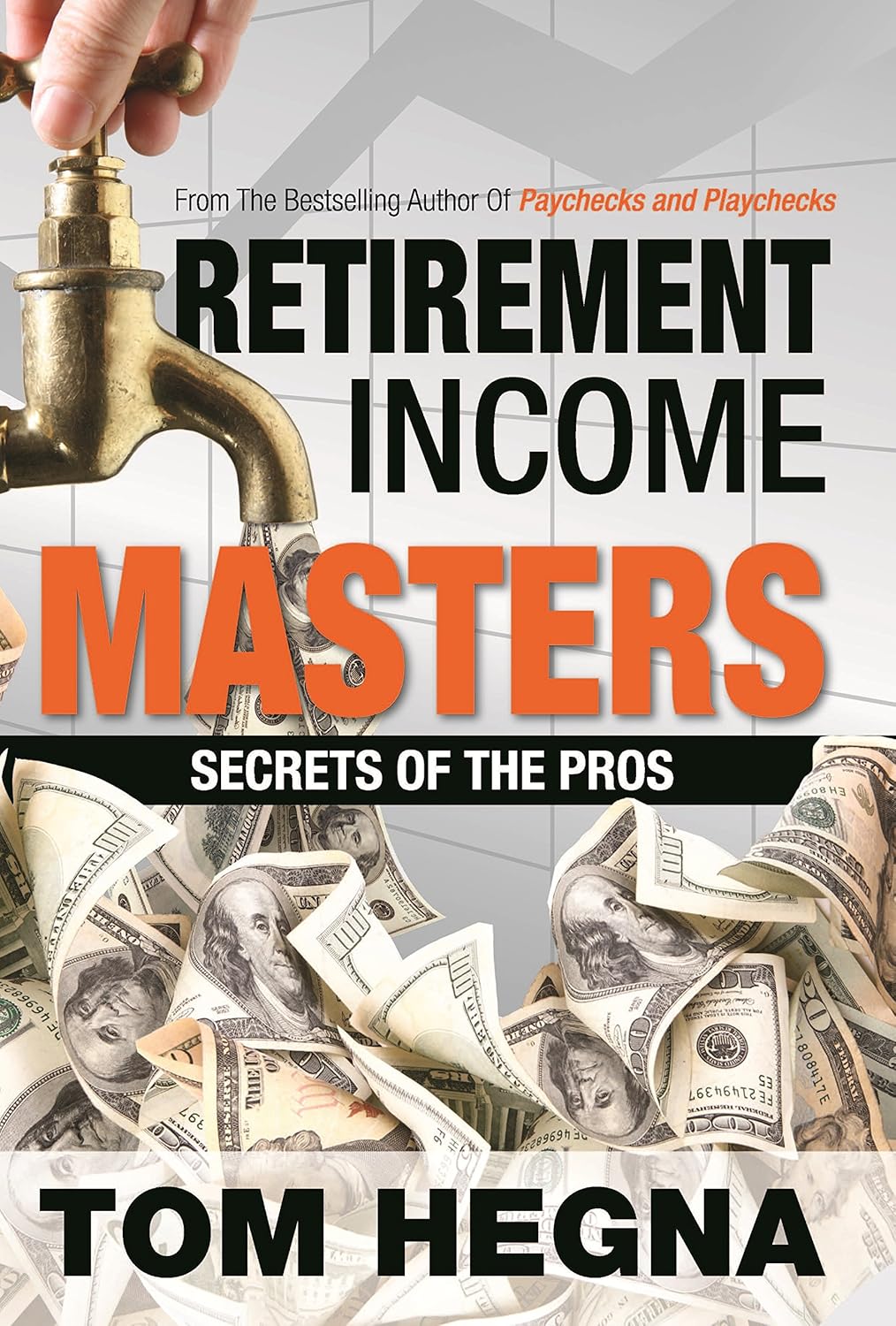
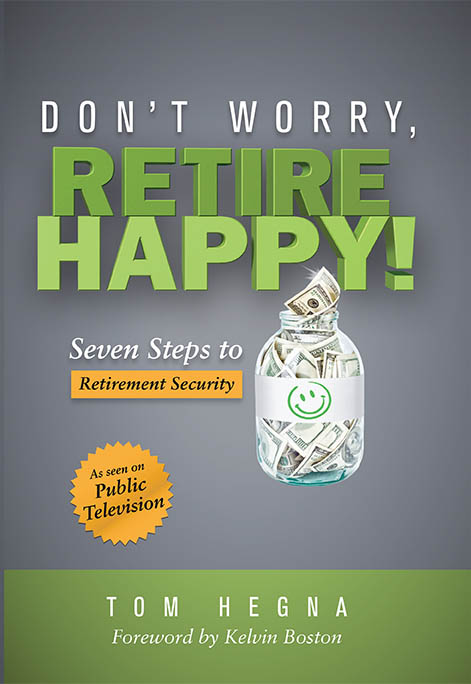
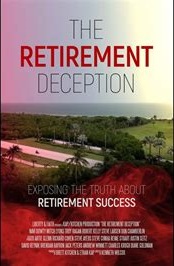
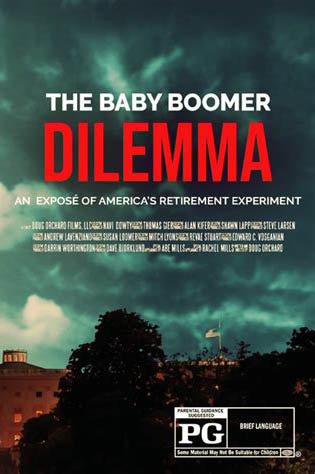

Getting Assistance
Chose who you consult with carefully about your retirement savings. Over 90% of advisors express having a vague understanding about the distribution of savings as income for retirement. Their main focus and expertise is limited to helping people in the accumulation of savings phase during one’s working years.

Proprietary Technology
Our unique software programs enable us to design a custom Income Distribution Plan to meet and exceed your financial needs in Retirement. We’ll show you the math calculations, do a side-by-side comparison and prove that you can get 200 – 300% more income to spend.

An Easy Decision
Waiting to transfer savings over to a Lifetime Income Retirement Account, reduces the amount of money that’s available and delays locking in your financial security. Moving your savings sooner rather than later will ensure you continue the lifestyle you worked hard to achieve, and have the peace of mind knowing you can afford the Golden Years of life!
Questions about your
Financial Future?
For more information, you are invited to give us a call today for a neighborly conversation.
Notices
COPYRIGHT © 2025
ALL RIGHTS RESERVED
American Financial Security
www.largestincome.com
Contact Info
(727)282-5535
afs@usa.com
3030 N. Rocky Point Dr. W.
Tampa, FL 33607
Quick Links


